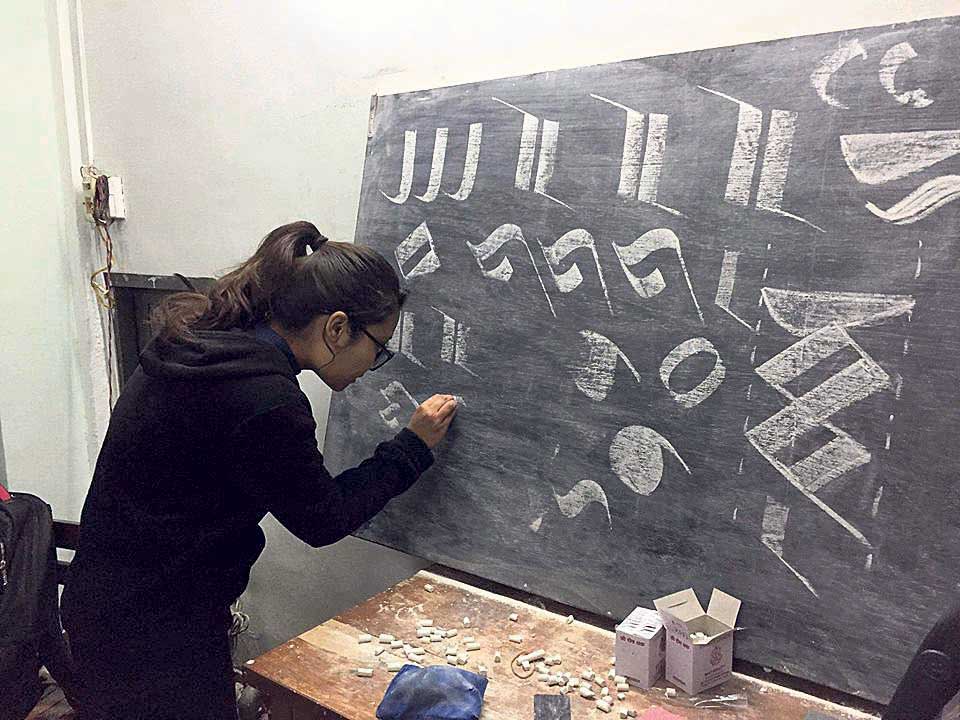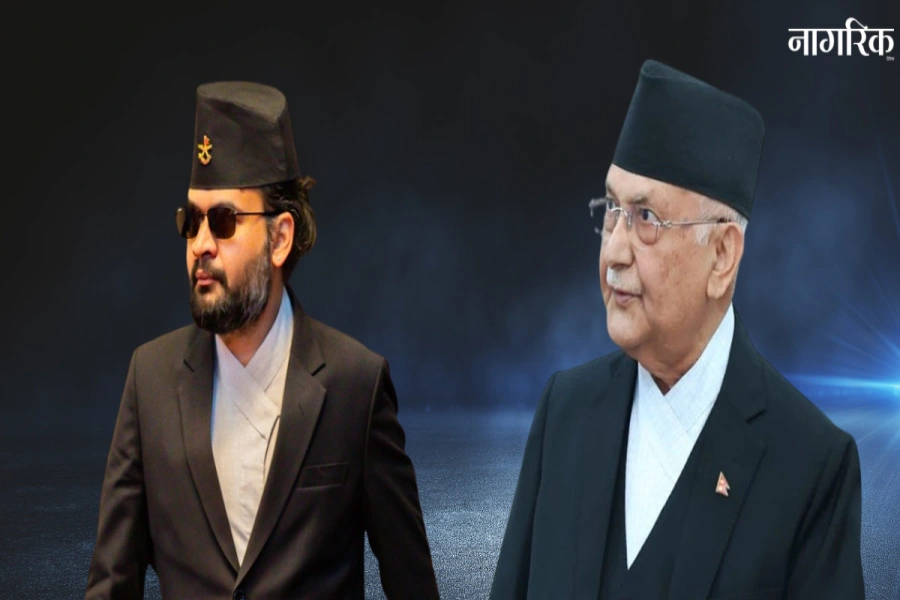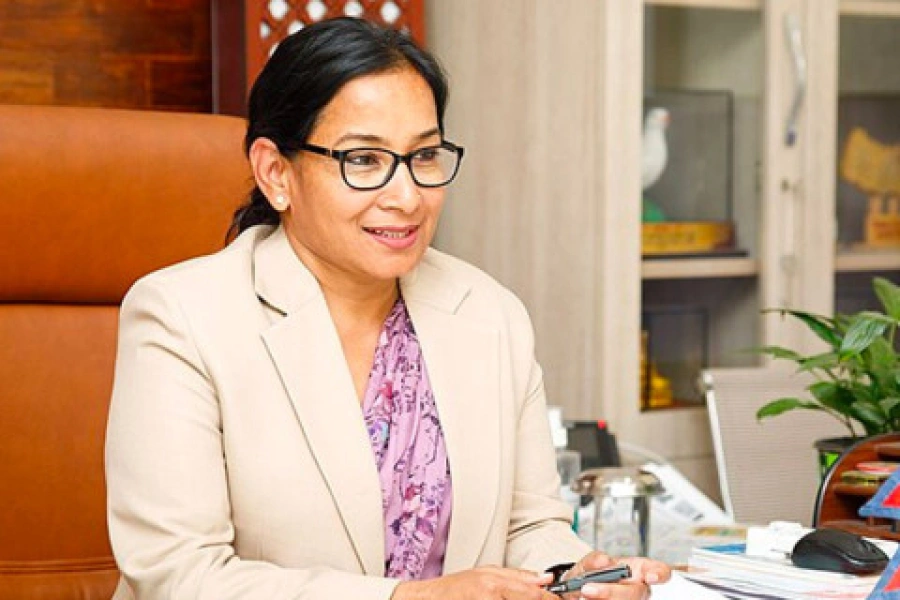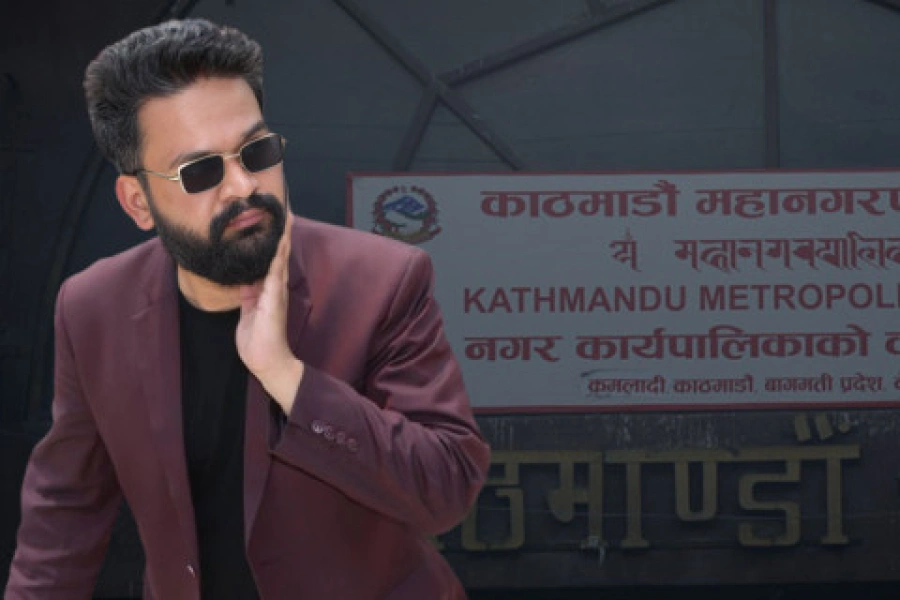The ancient Newar civilization lies in the core of Kathmandu Valley. Also the country’s capital, Kathmandu is the melting pot of a diverse culture, race, and ethnic practices. Furthermore, foreign cultures also influence the lifestyle in the capital, leaving the denizens with an array of linguistic and cultural choices. The plethora of choices has affected the lingual practices, pushing it to a verge of extinction. However, a number of academicians and organizations have stood to the challenge of preserving Kathmandu’s native language. They have been conducting programs, urging the natives not just to speak, but also to use the scripts of the Nepal Bhasa.
Callijatra Group is among many such groups who have been organizing workshops to promote the use and preservation of Nepal Lipi. They have a professional tie with Nepal Lipi Guthi, and together, they organize workshops in different parts of the valley.
Ananda Maharjan, a Callijatra member explained, “Newa(Nepal) Lipi is directly related to our culture. So, it is important for us to promote its use.” Maharjan has been working to promote the use of the Nepal Lipi for the last three years. “The eagerness to learn Nepal Bhasa is not just limited to native Newars; people of different cast, ethnicity, and nationality are also joining the workshops to learn the script. Maharjan further informed that the classes were open to everyone, and those willing to learn Nepal Bhasa could visit the Asan based Nepal Lipi Guthi.
Some glimpses of Nepal’s first ‘Lipi Nakha’

Nepal Lipi Guthi, at present, has been conducting two classes a day. The students are taught three different Lipi: Nepal Lipi, Ranjana Lipi, and Bhujimol Lipi. Vice-chairperson of Nepal Lipi Guthi, Anil Sthapit said, “Nepal Bhasa is our own native language.” Providing the background of the language, he added, “Nepal Bhasa was considered the official language of Nepal until 1962. It was Chandra Shamsher who stripped Nepal Bhasa of its honor, subsequently hindered the use of the language across the country.”
Sthapit further presented facts about the origin of the language saying that South Asian languages were developed from a single language. The root language transformed into different languages as per the convenience of its users.
Also, the Nepal Lipi is prevalent in most ancient inscriptions. Sthapit added, “Ranjana Lipi was developed during the development of ancient Nepali civilization. The language spread to Tibet, India, and even to Thailand for business practices.”
Presenting an insight into the present condition, Sthapit remarked, “Lack of Nepal Bhasa font in mediums of communications has been a huge challenge. However, there have been efforts to include Nepal Lipi in several devices.”
Further adding light to the origin of Nepal Lipi, Nirajan Tamrakar -- chairperson of Nepal Lipi Guthi said, “Around 2000 years ago, there was a Lipi named ‘Brahmi Lipi’. This was used throughout South Asia.” Tamrakar has spent four decades of his life in the promotion of Nepal Lipi.
However, it’s necessary to understand that Nepal Bhasa is not a cast specific language. I asked Tamrakar to brief on this fallacy. He explained, “Nepal Bhasa, and Lipi was wide-spread among the residents of Kathmandu. This might be the reason why people think that Nepal Lipi is Newar specific. Nepal Bhasa is not a caste or community-specific language.”
In Nepal Lipi Guthi, in-house language specialists are hired to teach the ancient script. Similarly, the Guthi also organizes campaigns in different places as per the demand. Currently, the Guthi is organizing classes in Pharping.







































